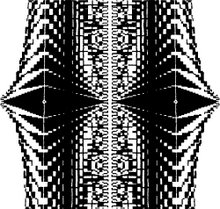 National Manuscript Centre, Tbilisi, September 2007
National Manuscript Centre, Tbilisi, September 2007(For the next while my photographs will be from both this location and Svaneti, one or several of each daily. Today - something from K'ala, Svaneti, 11th Century, written in the original of Georgia's three alphabets.)
Into a cold, rather dark room, pleasant change from the 35-degree heat of Tbilisi in late summer. Row upon row of metal shelves containing treasures of literature in many different languages. I had stumbled across the National Manuscript Centre (see http://manuscript.ge/?ln=eng ) helping a new friend from the USA who was working on his doctoral thesis in connection with early Georgian printing. But here were hundreds of books almost all written by hand.
The centre's director, as it turns out, is an avid photographer like me. He was ready with postcard gifts based on his work, and is a good PR man for the Centre as well. His current idea is an exhibition of photographs from the Centre's archives - and I was the first foreigner he invited to participate.
My setup was extremely simple: tripod, no flash - God forbid any extra light on these ancient, delicately magnificent pages of text and illumination! Either a simple 50mm standard lens, or this with a macro-focusing 2x converter added to the camera body. I was shooting quite close most of the time, zeroing in on small details of script, art or binding. There was much to choose from, brought to me either by my request ("Er, do you have anything from Svaneti?" "12th century, K'ala village...") or their expert choice ("Mongolian, we don't actually know how old it is... Amharic from Ethiopia - well-preserved for a 10th-century book, don't you think?"). Dazzled, I spent two days there, and in the end covered these languages plus Armenian (one selection was written on a grape leaf), Hebrew, Gothic (not just the alphabet but the long-dead language), Latin, Slavonic, Persian, Turkish, and Arabic (the most beautiful book I have ever seen, a hand-painted Quran resembling a miniature carpet). I touched nothing: the archive worker's gloved hands brought, opened, arranged on a piece of white paper which I was able to turn to my liking.
Whe photographing art, a useful control to have along is a colour bar - a strip of paper on which are printed, as permanently as posible, a set of standard printing colours and shades of grey. You place this next to the art and photograph them together, then compare the output - whether instant digital photo or scan - with the original colour bar, to ensure that tones and colours are reproduced accurately. I hadn't even thought to take a colour bar with me, but even if I had, it might have proved a real challenge to use in the tight closeups I was shooting. Nonetheless, several control shots with such a thing in the tungsten lighting, showing up a strong yellow colour cast on film, would have proved useful. As it is I've had to gradually build towards correct colours in my scanned shots on the computer, putting them aside and returning to them in stages. Many of the pages were somewhat yellowed with age - how much of my yellow cast was tungsten light, and how much was old paper? Gold book covers or gold leaf on the pages of the painted Quran must come across clearly as shiny metallic gold. Gently, gently, step by step towards a realistic presentation. Keep all photographs in a set from the same manuscript in the same colour range. Return later to the Centre to consult with its staff on final colour adjustments.
A good assignment for a photographer who is also a serious lover of books. Here is a selection from the scanned work. Exhibition details in Tbilisi to be announced...











No comments:
Post a Comment